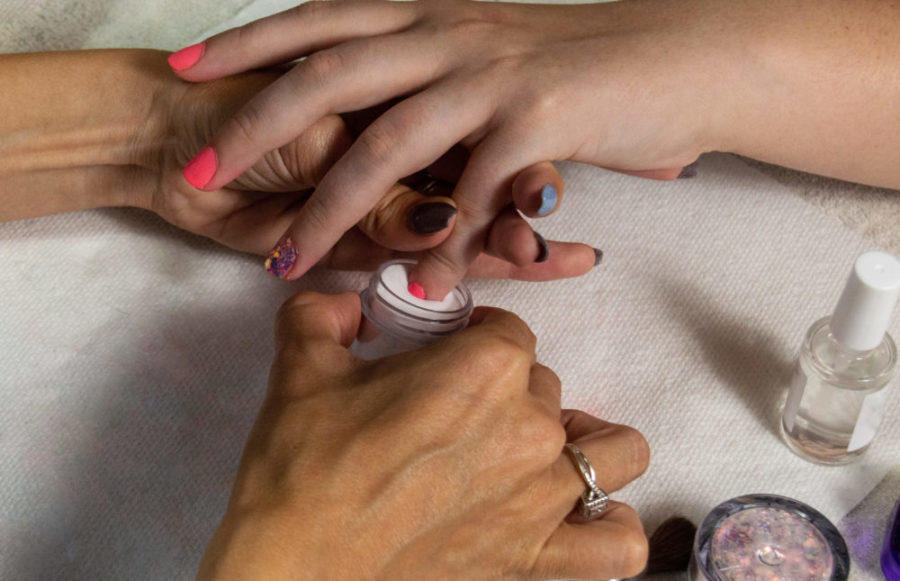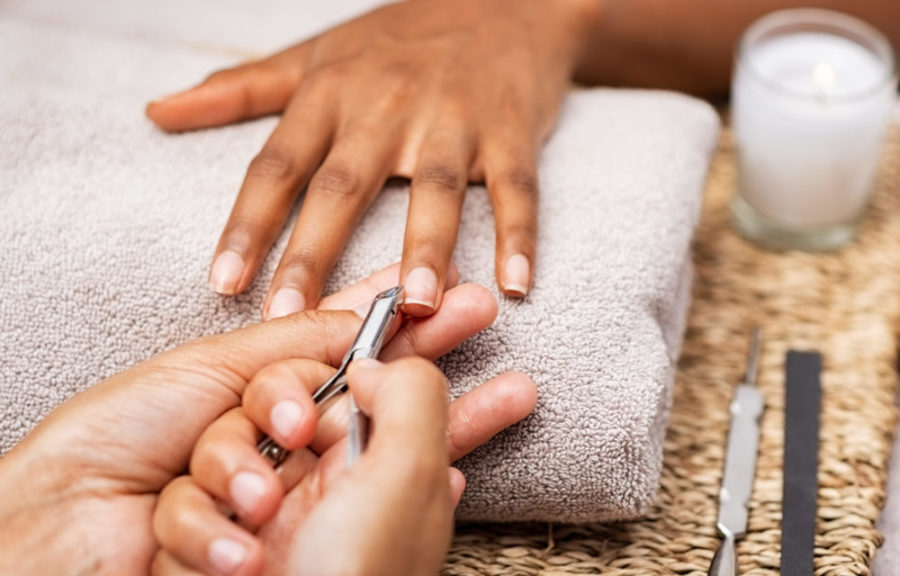Do Nails Need To Breathe? (And What's Actually Damaging Your Nails!)

The topic of nails and nail care seems simple enough, right? Give ‘em some cuticle oil, file, buff, and add a coat of nail polish to feel extra pretty. Some of us like to go one step further by doing gel or dip powder at the salon, or by clipping our cuticles so they look immaculate.
Wherever you land on the spectrum, there’s at least one or two questions that pop up from time to time. Like, “Do I need to let my nails breathe?!” or “Wait…is cuticle clipping a no-go?” We asked three manicurists to answer these questions – and other questions they get on the regular – so we can set it straight once and for all.
Do Nails Actually Breathe?
It’s a phrase we’ve heard over and over again… “Let your nails breath!” There are even nail polishes that tout being “breathable,” whatever that means! So what’s the deal?
“Nails cannot actually breathe – they don’t have lungs,” says Elle Gerstein, a celebrity manicurist serving both New York and Los Angeles. “Your nails’ living parts are delivered oxygen and nutrients through your bloodstream to through the matrix. Your nail plate, which is the dead hard layer, is not breathable.”
However, she says, the nail plate is porous. In that sense, it can absorb things, but it doesn’t pull in oxygen or vitamins or anything like that. She likens it to your hair, which is also made of dead stuff. As for breathable nail polish, this is mostly just a marketing tactic.
“‘Breathable’ nail polish is a type of polish formulated with the intention to let water and oxygen to pass through the polish and hit the nail surface naturally, explains Queenie Nguyen, a celebrity nail artist based in Los Angeles. “They also help the movements of natural oils on the nail surface in order to help with hydration. They also allow water to escape, which helps prevent chipping when nails get waterlogged.”
So, it’s not really about breathing, but more so about letting super tiny particulates of air and water to pass back and forth. Still, your nails get the nutrients and oxygen they need from underneath via that matrix Gerstein mentioned. If you feel better wearing polish that “breathes” then that’s OK but know it’s not ultimately necessary to your nail’s health. The foods you eat play more of a role, there!
Are Gel and Powder Dip Nails Bad For You?

The answer to this question isn’t so cut and dry. Let’s address two issues at play here: ingredients, and then wearing/removing the product itself.
The ingredients used in these products are regulated (these regulations vary according to your government) to be safer and going to a reputable salon will ensure the nail products have gone through the right processes before landing on your fingertips. That said, just like hair dye, some cosmetics – or even a can of soda or a giant cupcake – they are not flat-out considered “good” for you.
As for whether it’s bad to always wear gel or dip, “[remember that] your nails get their nutrients and ‘oxygen’ from the nail matrix layer that connects to your circulatory system,” says Chow Moji, nail artist at Cute Nail Studio in Austin, Texas.
The manicurists we spoke to said that the real issue is removing the product, which can be damaging to your nail bed (especially if it’s not done methodically and carefully).
“My philosophy is: if you’re going to wear dip or gel nails, wear them. The constant soaking and removal are where you’ll start to run into issues,” says Gerstein.
She adds that sometimes dip and powder can actually be a good thing for your nails, especially if yours are thin, weak, brittle, and/or flaky. “A dip or gel manicure will allow you to elongate and enhance the nail. With proper application, both are equally healthy and fine for the natural nail,” Gerstein says.
If you don’t have time to upkeep dip or powder and want to protect your weak nails, Nguyen says to seek over-the-counter products that can help create a hard, protective shell on top.
“There are brands – like Orly and CND – that introduced structure gel to the market. Those aim to create a layer of protection on top of your nails and you can wear those under regular polish or gel polish,” says Ngyuen. “Structure gel is a type of soak-off gel, which means that you can soak off everything easily.”
Is it OK to Have My Cuticles Clipped?

All three manicurists we spoke to said that cuticle clipping is A-OK. What you don’t want to do – or have done to you – is cut the proximal nail fold, referred to as the eponychium. Skilled nail techs know the difference, which is why it’s important to go to a well-trained manicurist working in an ultra-hygienic salon.
“Cuticles usually grow and form a thin layer over your nails and close to the proximal nail fold. I usually recommend pushing that back and gently buff off with a buffer to remove it from the nail surface,” says Nguyen. (This is an easy way to DIY it at home if you don’t have nail clippers.) She adds, “You can carefully remove the thin layer of cuticles with a nipper at the salon, but definitely pay close attention to what the technician is removing.”
How Can I Choose the Right Nail Shape for Me?

Squoval, square, rounded, pointed, coffin – the options seem endless! So, what’s the key to finding the most flattering nail shape? Gerstein says she takes the “mirror image cuticle” approach. Basically, create the same shape on the top as you’ve got on the bottom. Still, there’s really no hard science to it, and ultimately nail shaping is a matter of preference.
“I think quite practical when it comes to nail shape,” says Nguyen. “The popular nail shapes now are almond, stiletto, and coffin. However, before trying out a nail shape, I would consider factors like whether this shape be compatible with your daily routine, compatible with your natural nail strength, and compatible with your nail length. I think once you figure those factors out then you’ll be able to find the perfect shape that complements your hands best.”
How Can I Take Care of My Nails At Home?
First thing’s first: take a holistic approach and take care of both your hands and nails at the same time. For starters, keep a little bottle of hand cream nearby. Also, don’t forget to exfoliate this area regularly (this helps with absorption) and make sure your hands and nails are protected from the sun via sunscreen. Try Supergoop Handscreen SPF 40, $14.
“For nails, I recommend that you use cuticle oil on the daily basis in order to keep them moisturized. This also helps with the growth of your natural nails,” says Nguyen. “Also, when you’re not wearing nail enhancements, be sure to invest in a nail strengthener to protect your natural nails.” We recommend CND RescuerXx, $19.90, and Flowery Scented Cuticle Oil, $8.
Last but not least, think of your nails as jewels – not tools. That means not using them to open things and wearing gloves when necessary, like when washing dishes or digging in the garden. This keeps them healthier in the long run and means your manicure will last way longer. Double win!





















Leave a comment